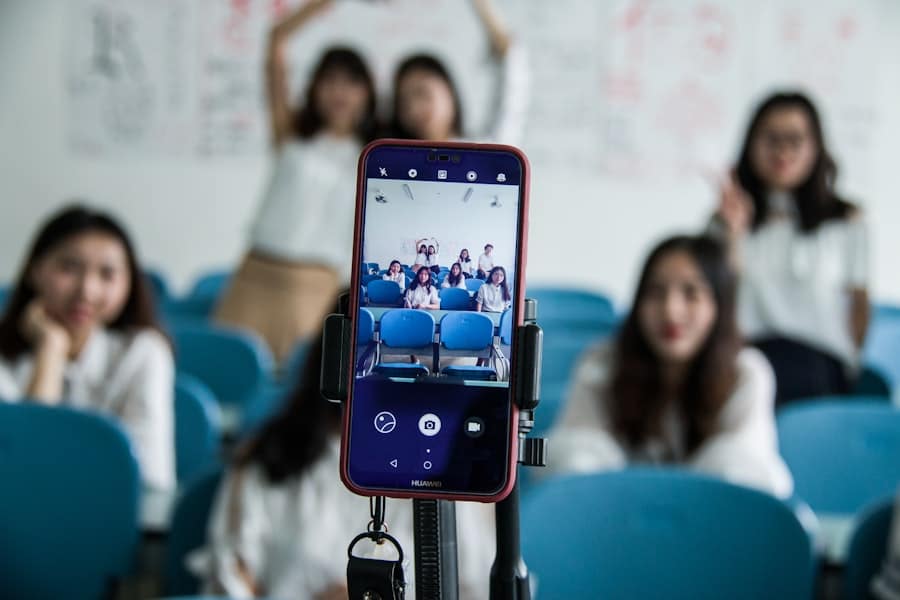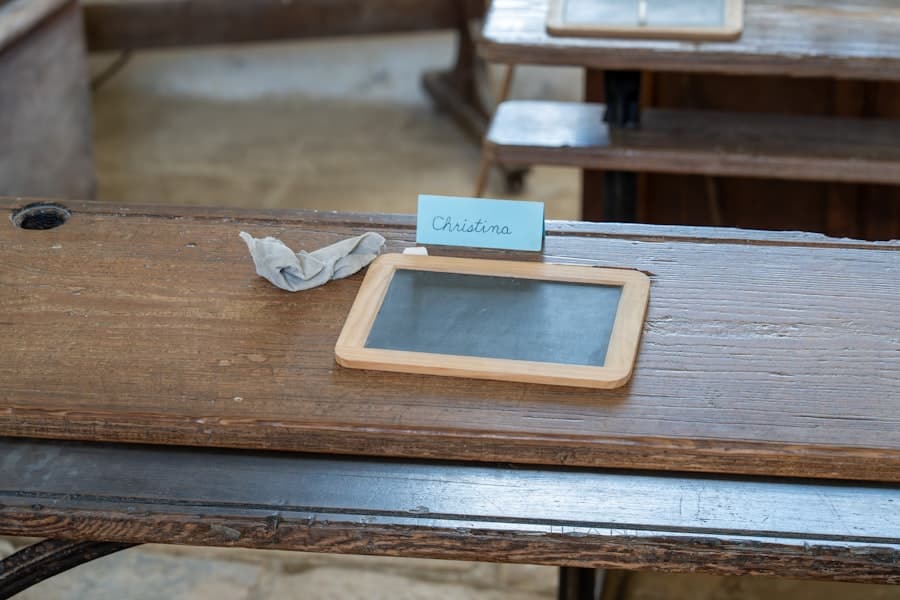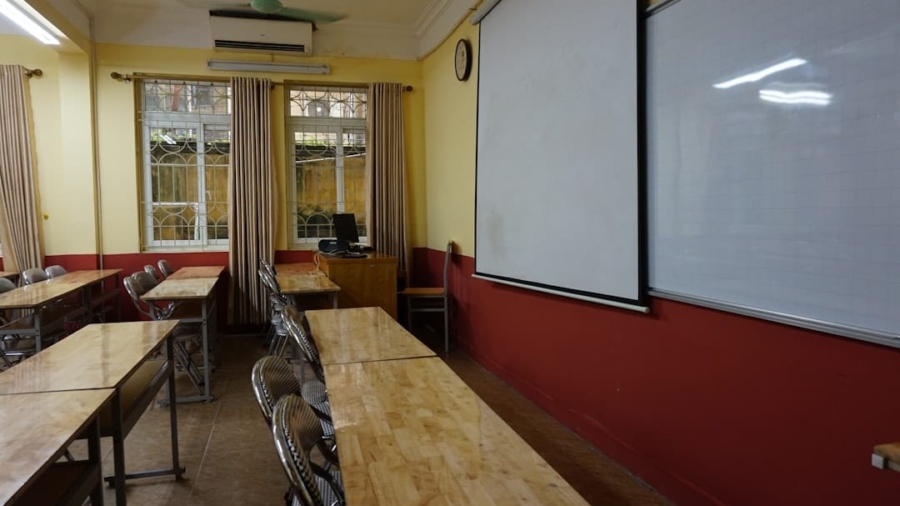The advent of wireless technology has significantly transformed the educational landscape, ushering in a new era of learning that is more connected and accessible than ever before. Over the past two decades, the proliferation of Wi-Fi networks, mobile devices, and cloud-based applications has enabled educational institutions to adopt innovative teaching methodologies that were previously unimaginable. This shift has been driven by the increasing demand for flexible learning environments that cater to diverse student needs and learning styles.
As a result, schools and universities are increasingly investing in wireless infrastructure to support a range of educational activities, from collaborative projects to remote learning. The rise of wireless technology in education is not merely a trend; it reflects a fundamental change in how knowledge is disseminated and acquired. With the ability to access vast repositories of information at their fingertips, students are no longer passive recipients of knowledge but active participants in their learning journeys.
This democratization of information has empowered learners to explore subjects in greater depth and engage with content in ways that resonate with their individual interests. Moreover, the integration of wireless technology has facilitated the development of personalized learning experiences, allowing educators to tailor their teaching strategies to meet the unique needs of each student.
Key Takeaways
- Wireless technology has become increasingly prevalent in education, allowing for more flexibility and mobility in learning environments.
- Interactive learning environments can be created through the use of wireless technology, enabling more engaging and collaborative experiences for students.
- Wireless technology in educational labs offers advantages such as increased flexibility, mobility, and accessibility to resources and information.
- Successful implementation of wireless technology in educational labs can be seen in examples such as virtual reality simulations and remote access to lab equipment.
- Challenges in integrating wireless technology in educational labs can be overcome through careful planning, investment in infrastructure, and training for educators.
Creating Interactive Learning Environments with Wireless Tech
Wireless technology has paved the way for interactive learning environments that foster collaboration and engagement among students. By leveraging tools such as tablets, smartphones, and laptops, educators can create dynamic classrooms where students actively participate in discussions, group projects, and hands-on activities.
This level of interactivity not only enhances the learning experience but also cultivates essential skills such as teamwork and communication. In addition to facilitating collaboration, wireless technology also supports the integration of multimedia resources into the learning process. Educators can easily incorporate videos, podcasts, and interactive simulations into their lessons, making complex concepts more accessible and engaging for students.
For example, a science teacher might use wireless technology to stream a live experiment from a remote laboratory or utilize virtual reality applications to immerse students in historical events or scientific phenomena. These interactive elements not only capture students’ attention but also promote deeper understanding by allowing learners to visualize and manipulate information in real-time.
Advantages of Wireless Tech in Educational Labs

The implementation of wireless technology in educational labs offers numerous advantages that enhance both teaching and learning experiences. One of the most significant benefits is the increased flexibility it provides. Traditional lab settings often require students to work within fixed parameters, but wireless technology allows for greater mobility and adaptability.
Students can conduct experiments using mobile devices that connect to various sensors and data collection tools, enabling them to gather real-time data from multiple locations within the lab environment. This flexibility encourages exploration and experimentation, fostering a culture of inquiry that is essential for scientific learning. Moreover, wireless technology facilitates seamless access to online resources and databases that are crucial for research and experimentation.
Students can easily connect to academic journals, research papers, and instructional videos that enhance their understanding of complex topics. For instance, a biology lab might utilize wireless connectivity to access genomic databases or online simulation tools that allow students to model biological processes. This access not only enriches the educational experience but also prepares students for future careers in research and technology by familiarizing them with the tools and resources they will encounter in professional settings.
Examples of Successful Implementation of Wireless Tech in Educational Labs
Numerous educational institutions have successfully integrated wireless technology into their labs, showcasing its potential to enhance learning outcomes. One notable example is the University of Southern California’s (USC) Viterbi School of Engineering, which has embraced wireless technology to create an innovative engineering lab environment. The lab is equipped with wireless sensors and devices that allow students to conduct experiments remotely while collecting data in real-time.
This setup not only enhances student engagement but also prepares them for careers in engineering fields where remote monitoring and data analysis are increasingly important. Another compelling case is found at the Massachusetts Institute of Technology (MIT), where the Media Lab has pioneered the use of wireless technology in interdisciplinary research projects. Students collaborate on projects that merge art, science, and technology, utilizing wireless devices to create interactive installations and prototypes.
The lab’s emphasis on hands-on learning and experimentation exemplifies how wireless technology can facilitate creativity and innovation in educational settings. By providing students with the tools they need to explore their ideas freely, MIT’s Media Lab serves as a model for other institutions looking to harness the power of wireless technology in their educational labs.
Overcoming Challenges in Integrating Wireless Tech in Educational Labs
Despite the numerous benefits associated with integrating wireless technology into educational labs, several challenges must be addressed to ensure successful implementation. One significant hurdle is the issue of infrastructure. Many educational institutions may lack the necessary bandwidth or reliable connectivity required to support a fully wireless environment.
Inadequate infrastructure can lead to frustration among both educators and students, hindering the effectiveness of wireless tools and resources. To overcome this challenge, institutions must prioritize investments in robust Wi-Fi networks and ensure that all areas of the campus are adequately covered. Another challenge lies in training educators to effectively utilize wireless technology in their teaching practices.
While many educators may be comfortable using traditional teaching methods, they may lack the skills or confidence needed to integrate new technologies into their lessons. Professional development programs focused on technology integration can help bridge this gap by providing educators with the knowledge and resources they need to leverage wireless tools effectively. Additionally, fostering a culture of collaboration among educators can encourage the sharing of best practices and innovative strategies for using wireless technology in educational labs.
The Future of Wireless Technology in Education

As wireless technology continues to evolve, its impact on education is expected to grow even more profound. Emerging technologies such as 5G networks promise to deliver faster speeds and lower latency, enabling even more sophisticated applications in educational settings. For instance, augmented reality (AR) and virtual reality (VR) experiences will become increasingly accessible through high-speed wireless connections, allowing students to engage with content in immersive ways that were previously limited by bandwidth constraints.
This evolution will further enhance interactive learning environments and provide opportunities for experiential learning that transcend traditional classroom boundaries.
AI-driven platforms can analyze student performance data in real-time, providing personalized feedback and recommendations tailored to individual learning needs.
This level of customization will empower educators to create targeted interventions that support student success while fostering a more inclusive learning environment. As these technologies continue to develop, educational institutions will need to remain agile and adaptable, embracing new tools and methodologies that enhance teaching and learning experiences.
Best Practices for Utilizing Wireless Tech in Educational Labs
To maximize the benefits of wireless technology in educational labs, institutions should adopt several best practices that promote effective integration. First and foremost, it is essential to establish clear guidelines for device usage within the lab environment. Educators should communicate expectations regarding appropriate use of personal devices during class time while encouraging responsible digital citizenship among students.
By fostering an environment where technology is used purposefully, educators can minimize distractions and enhance focus on learning objectives. Additionally, institutions should prioritize ongoing professional development for educators focused on technology integration strategies. Workshops and training sessions can equip teachers with the skills needed to effectively incorporate wireless tools into their lessons while exploring innovative pedagogical approaches that leverage these technologies.
Collaboration among educators can also facilitate knowledge sharing and inspire creative uses of wireless technology within educational labs.
The Impact of Wireless Tech on Student Engagement and Learning Outcomes
The integration of wireless technology into educational settings has been shown to have a profound impact on student engagement and learning outcomes. Research indicates that when students have access to interactive tools and resources, they are more likely to participate actively in their learning experiences. For example, studies have demonstrated that classrooms equipped with wireless devices see increased student collaboration and communication during group projects, leading to improved critical thinking skills and deeper understanding of subject matter.
Furthermore, the ability to access information instantly through wireless technology empowers students to take ownership of their learning journeys. They can explore topics beyond the confines of traditional curricula, fostering a sense of curiosity and motivation that drives academic success. As students engage with content through various multimedia formats—such as videos, simulations, or interactive quizzes—they are more likely to retain information and apply it effectively in real-world contexts.
Ultimately, the impact of wireless technology on student engagement translates into enhanced learning outcomes that prepare learners for success in an increasingly interconnected world.
If you are interested in exploring how technology is revolutionizing different industries, you may also want to check out The Ultimate Guide to the 6 Best DJ Software for Beginners in 2023. This article delves into how software is transforming the world of music production and DJing, providing valuable insights for beginners looking to break into the field. Just like how wireless technology is enhancing educational labs, DJ software is changing the way music is created and mixed, making it more accessible and interactive for aspiring artists.
FAQs
What is wireless technology in educational labs?
Wireless technology in educational labs refers to the use of wireless communication and connectivity to enable interactive and collaborative learning experiences. This can include wireless internet access, Bluetooth connectivity, and other wireless technologies that allow students to engage with educational content and tools without being tethered to a physical connection.
How is wireless technology driving interactive educational labs?
Wireless technology is driving interactive educational labs by enabling seamless connectivity and access to educational resources. This allows for the integration of interactive tools, such as tablets, smartphones, and interactive whiteboards, that can be used to engage students in hands-on learning experiences. Additionally, wireless technology allows for real-time collaboration and communication between students and teachers, enhancing the overall educational experience.
What are the benefits of using wireless technology in educational labs?
Some benefits of using wireless technology in educational labs include increased flexibility and mobility, as students and teachers can access educational resources from anywhere within the lab. Additionally, wireless technology allows for a more interactive and engaging learning experience, as students can use a variety of devices and tools to interact with educational content. Furthermore, wireless technology can facilitate real-time data collection and analysis, enabling students to conduct experiments and research in a more efficient and effective manner.
What are some examples of wireless technology used in educational labs?
Examples of wireless technology used in educational labs include wireless internet access, Bluetooth-enabled devices, interactive whiteboards with wireless connectivity, and wireless sensors for data collection and analysis. Additionally, educational institutions may utilize wireless presentation systems, wireless microphones, and other wireless tools to enhance the learning experience in educational labs.

